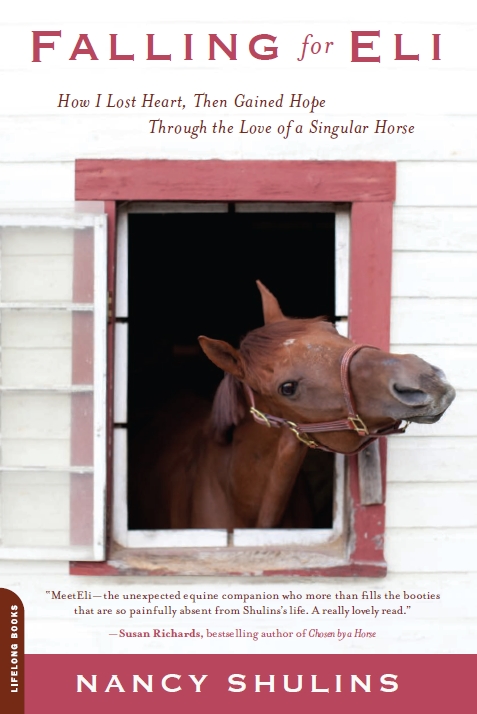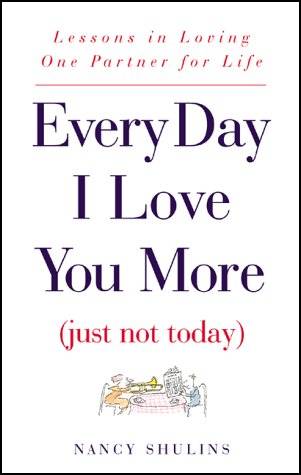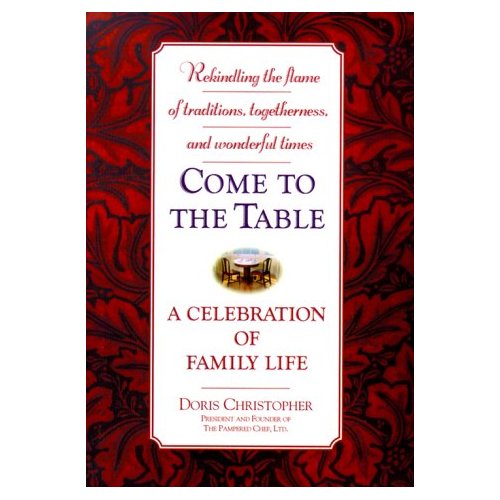By Nancy Shulins
All summer, Old Man Tenney had cursed the noise and the dust, waving his fist at the bulldozers and trucks. “I was born here and I’ll die here,” he vowed. At 64, he was still strong and handsome, a quintessential small-town folk hero whose drama was being played out in the papers for all to read: Stubborn Farmer Refuses State’s Offer, Interstate Stalled.
But there was more than stubbornness behind Romaine Tenney’s refusal to sell the only home he’d ever known. The 75-acre farm on the Ascutney, Vermont, hillside represented a way of life that had all but disappeared in his lifetime. Among his neighbors, Tenney alone still farmed with horses and hayed with a pitchfork, lit his house with kerosene and heated it with wood.
That this most pristine of farms should stand directly in the proposed path of Interstate 91 seemed a particularly cruel twist of fate. Still, even as the army of bulldozers inched their way north, tearing up his fields and using his yard as a roadway, no one knew how far he would take his vow. On the night of September 11th, 1964, we found out.
The flames were hot enough to melt the blue plastic bubble on a police cruiser parked nearby. Tenney’s neighbors watched and waited, hoping they’d see him stumble out of the woods or emerge from the barn, charred and dusty and mad as hell. But when the old man’s dogs tried to dig their way into the burning farmhouse, the villagers knew. There was no need to wait for the fire marshal’s report that Tenney had set the fire that took him and his house. He had warned them: “I was born here and I’ll die here.”
I had just turned ten the summer the bulldozers chewed through the hill, clearing the way for I-91. Looking back on it now, I know September 11th, 1964 was the night my life as a writer began, posing questions I would grapple with for decades, about place and displacement, and the power of each to shape lives. But none of that would come until later, after I’d left my own childhood home for good.
I left home in stages. I went to college in Boston but I chafed in the classroom and dropped out midway through my third year. Returning home, short on money and options, with no idea how permanent a stay this might be, I’d have been hard-pressed to say who among us was least happy to have me back: Mom, Dad or me. With my half-a-degree, I struck out to find fortune, but it soon became clear jobs weren’t waiting for me. In desperation, I took to hanging around the tiny regional office of an out-of-town newspaper trying to make inroads in my town. By exaggerating the quality of my contacts, I managed to get a key to the place. I practically lived there, covering anything and everything that moved. Within six months, my strategy had paid off. I was promoted to the main office and given a beat of my own. Hallelujah! I got to move out of my parents’ house again.
For the next dozen years, home was a series of apartments as I learned to make my way in the world, first as a small-town reporter in New Hampshire, then an Associated Press correspondent in Vermont, where the effect of the place on its people was all but impossible to miss. From the curvature of farmers’ backs from low-ceilinged dairy barns to the crushed, mangled fingers of the stone masons, Vermont tended to literally leave its mark. Similarly, the hackneyed image of the taciturn Yankee was no mere stereotype. A climate best summed up as six months of winter and six months of poor sledding didn’t lend itself to long-windedness. What it did tend to do was hone character. One couldn’t wish for better neighbors than these.
At twenty-four, I traded the Green Mountains for the corn and soybean fields of Indiana to open a new AP bureau with a staff of one. Dwarfed by the sky, a mere speck on the horizon, I knew I was in the wrong place. My longing for the familiar mountains and valleys of home was so sharp, I felt as if I’d been stabbed.
I survived my stint in the Midwest by immersing myself in work. I wrote about an old mining town in Kentucky where nobody worked; the entire economy was based on black lung benefits. In Indiana, I sat in a barn with a weeping farmer while property that had been in his family for three generations was auctioned to the marginally better off.
After two years, I was promoted back East. As a national feature writer based in New York, I roamed the country for the most compelling stories I could find. Almost invariably, the ones I most wanted to tell were of lives shaped by landscapes, homes of origin versus homes of choice, and the invisible bonds that keep the Tenneys of the world firmly tethered to their place of birth.
I wrote about the lunar surface of a Mojave Desert outpost with chemical plants at either end, a U.S. missile testing range on one side and a stinking dry lakebed on the other, home to two thousand souls. The reaction of newcomers was almost always the same: They took one look – and one whiff – of Trona, Calif., and burst into tears that for some lasted weeks. But after a few months – or in some cases, years – they couldn’t imagine wanting to live anywhere else.
I spent one of the coldest, snowiest nights of a Manhattan winter with a ragtag community of box dwellers who put me to bed under scraps of blankets in a refrigerator carton – a penthouse, in their eyes – and insisted on sharing what little food they had.
On another assignment, I befriended a successful artist who specialized in highly detailed paintings of rotting flesh, weeping sores and serial killers. A number of our interviews took place in his apartment, which he’d furnished with sideshow relics: a stillborn encephalitic fetus, a cancerous human lung, a two-headed calf and other oddities, the “freaks and geeks” that he thought of as birds of a feather, his flock. He identified with them because they exist outside the culture, not unlike the artist himself.
Increasingly, I found myself drawn to the displaced: the Hmong refugees of Laos, shooting songbirds for supper in the poorer neighborhoods of Minneapolis/St. Paul, struggling to find a place for themselves somewhere between the homeland they’d left and the new one their children so effortlessly had embraced.
There were the two brothers who lived and worked together on their remote farm near the Canadian border, with no telephone or lock on their door, until their way of life was stolen along with their money by two thugs who beat them and left them for dead. For them, home became a prison in which to live out their last few years trapped behind new deadbolt locks.
I also wrote about an anthropologist and a woman from a Stone Age tribe he’d fallen in love with while doing fieldwork in the Amazon. They raised their three children in an apartment in East Rutherford, N.J. There, just as she had once led him down jungle paths, he guided her through a strange new world with its perplexing cast of characters: Jesus Christ, Betty Crocker, Rocky Balboa, Uncle Sam. She handled it all with such equanimity and grace, smiling as she mixed baby formula, humming as she watched MTV, that it came as a shock when the anthropologist called several years later to tell me that on a family visit to the Amazon, she had disappeared into the jungle for good, leaving him and her children to return to the home she’d never left in her heart.
Eventually, my own journey led back to New England, where I’ve now lived twenty years in the same house. But during my period of exile, when my job required me to make a home for myself somewhere else, I used to take I-91 back to northern New England for a day or two each chance I got. To ward off the homesickness that accompanied my return trips, I’d fill my car with lilacs in June, hydrangeas in August and try to make it back to the city before they died. But no matter how sturdy they looked on the branch, or how carefully I transported them, I never could keep them alive. Like the farmer whose untimely death shaped my life, they were too deeply rooted to bloom anywhere else.
But there was more than stubbornness behind Romaine Tenney’s refusal to sell the only home he’d ever known. The 75-acre farm on the Ascutney, Vermont, hillside represented a way of life that had all but disappeared in his lifetime. Among his neighbors, Tenney alone still farmed with horses and hayed with a pitchfork, lit his house with kerosene and heated it with wood.
That this most pristine of farms should stand directly in the proposed path of Interstate 91 seemed a particularly cruel twist of fate. Still, even as the army of bulldozers inched their way north, tearing up his fields and using his yard as a roadway, no one knew how far he would take his vow. On the night of September 11th, 1964, we found out.
The flames were hot enough to melt the blue plastic bubble on a police cruiser parked nearby. Tenney’s neighbors watched and waited, hoping they’d see him stumble out of the woods or emerge from the barn, charred and dusty and mad as hell. But when the old man’s dogs tried to dig their way into the burning farmhouse, the villagers knew. There was no need to wait for the fire marshal’s report that Tenney had set the fire that took him and his house. He had warned them: “I was born here and I’ll die here.”
I had just turned ten the summer the bulldozers chewed through the hill, clearing the way for I-91. Looking back on it now, I know September 11th, 1964 was the night my life as a writer began, posing questions I would grapple with for decades, about place and displacement, and the power of each to shape lives. But none of that would come until later, after I’d left my own childhood home for good.
I left home in stages. I went to college in Boston but I chafed in the classroom and dropped out midway through my third year. Returning home, short on money and options, with no idea how permanent a stay this might be, I’d have been hard-pressed to say who among us was least happy to have me back: Mom, Dad or me. With my half-a-degree, I struck out to find fortune, but it soon became clear jobs weren’t waiting for me. In desperation, I took to hanging around the tiny regional office of an out-of-town newspaper trying to make inroads in my town. By exaggerating the quality of my contacts, I managed to get a key to the place. I practically lived there, covering anything and everything that moved. Within six months, my strategy had paid off. I was promoted to the main office and given a beat of my own. Hallelujah! I got to move out of my parents’ house again.
For the next dozen years, home was a series of apartments as I learned to make my way in the world, first as a small-town reporter in New Hampshire, then an Associated Press correspondent in Vermont, where the effect of the place on its people was all but impossible to miss. From the curvature of farmers’ backs from low-ceilinged dairy barns to the crushed, mangled fingers of the stone masons, Vermont tended to literally leave its mark. Similarly, the hackneyed image of the taciturn Yankee was no mere stereotype. A climate best summed up as six months of winter and six months of poor sledding didn’t lend itself to long-windedness. What it did tend to do was hone character. One couldn’t wish for better neighbors than these.
At twenty-four, I traded the Green Mountains for the corn and soybean fields of Indiana to open a new AP bureau with a staff of one. Dwarfed by the sky, a mere speck on the horizon, I knew I was in the wrong place. My longing for the familiar mountains and valleys of home was so sharp, I felt as if I’d been stabbed.
I survived my stint in the Midwest by immersing myself in work. I wrote about an old mining town in Kentucky where nobody worked; the entire economy was based on black lung benefits. In Indiana, I sat in a barn with a weeping farmer while property that had been in his family for three generations was auctioned to the marginally better off.
After two years, I was promoted back East. As a national feature writer based in New York, I roamed the country for the most compelling stories I could find. Almost invariably, the ones I most wanted to tell were of lives shaped by landscapes, homes of origin versus homes of choice, and the invisible bonds that keep the Tenneys of the world firmly tethered to their place of birth.
I wrote about the lunar surface of a Mojave Desert outpost with chemical plants at either end, a U.S. missile testing range on one side and a stinking dry lakebed on the other, home to two thousand souls. The reaction of newcomers was almost always the same: They took one look – and one whiff – of Trona, Calif., and burst into tears that for some lasted weeks. But after a few months – or in some cases, years – they couldn’t imagine wanting to live anywhere else.
I spent one of the coldest, snowiest nights of a Manhattan winter with a ragtag community of box dwellers who put me to bed under scraps of blankets in a refrigerator carton – a penthouse, in their eyes – and insisted on sharing what little food they had.
On another assignment, I befriended a successful artist who specialized in highly detailed paintings of rotting flesh, weeping sores and serial killers. A number of our interviews took place in his apartment, which he’d furnished with sideshow relics: a stillborn encephalitic fetus, a cancerous human lung, a two-headed calf and other oddities, the “freaks and geeks” that he thought of as birds of a feather, his flock. He identified with them because they exist outside the culture, not unlike the artist himself.
Increasingly, I found myself drawn to the displaced: the Hmong refugees of Laos, shooting songbirds for supper in the poorer neighborhoods of Minneapolis/St. Paul, struggling to find a place for themselves somewhere between the homeland they’d left and the new one their children so effortlessly had embraced.
There were the two brothers who lived and worked together on their remote farm near the Canadian border, with no telephone or lock on their door, until their way of life was stolen along with their money by two thugs who beat them and left them for dead. For them, home became a prison in which to live out their last few years trapped behind new deadbolt locks.
I also wrote about an anthropologist and a woman from a Stone Age tribe he’d fallen in love with while doing fieldwork in the Amazon. They raised their three children in an apartment in East Rutherford, N.J. There, just as she had once led him down jungle paths, he guided her through a strange new world with its perplexing cast of characters: Jesus Christ, Betty Crocker, Rocky Balboa, Uncle Sam. She handled it all with such equanimity and grace, smiling as she mixed baby formula, humming as she watched MTV, that it came as a shock when the anthropologist called several years later to tell me that on a family visit to the Amazon, she had disappeared into the jungle for good, leaving him and her children to return to the home she’d never left in her heart.
Eventually, my own journey led back to New England, where I’ve now lived twenty years in the same house. But during my period of exile, when my job required me to make a home for myself somewhere else, I used to take I-91 back to northern New England for a day or two each chance I got. To ward off the homesickness that accompanied my return trips, I’d fill my car with lilacs in June, hydrangeas in August and try to make it back to the city before they died. But no matter how sturdy they looked on the branch, or how carefully I transported them, I never could keep them alive. Like the farmer whose untimely death shaped my life, they were too deeply rooted to bloom anywhere else.



